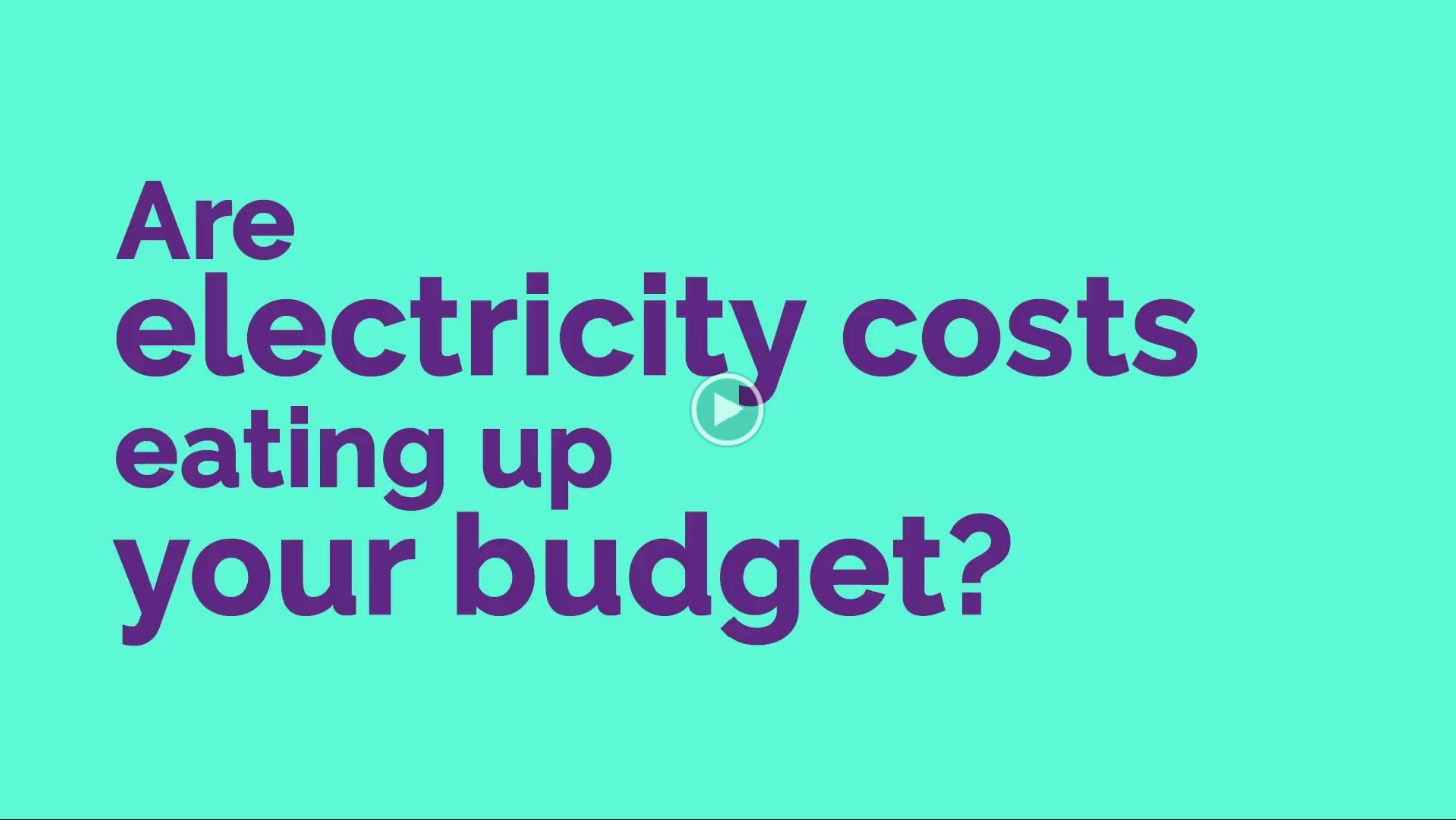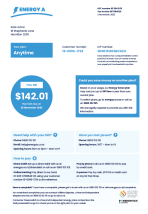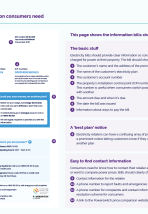Developing a model electricity bill
In its 2019 report, the Electricity Price Review recommended power bills be simplified to make them easier for consumers to understand. We’ve designed a model bill that aims to do exactly that.

-
View transcript
[Music plays]
Are electricity costs eating up your budget?
What if your electricity retailer had to tell you if you could save money by switching to another plan? We think power bills should feature a prominent notice letting you know if there's a better plan for you. Retailers should also be making bills easier to understand. Your power bill shouldn't feel like a riddle.
As well as the notice, your bill should show upfront your customer details, including the name of your power plan, what you need to pay, when payment is due, plus ways to pay. And you need to know who to contact if you have a question or complaint, or if there's a fault or emergency.
Electricity retailers and your power bill should help you make decisions to save, not spend. Find out more about our power bills project at cac.org.nz.
Developing the bill
If all power bills contained the same information it would be easier for consumers – and the budgeting agencies who work with them – to compare prices and use switching websites like Powerswitch. We've developed a model bill that power companies in NZ could use as a template for their own bills.
The model electricity bill aims to address 2 key problems.
- Power companies don’t always tell consumers if they’re on the best plan for their electricity use. This means households can end up paying more than they should.
- Electricity bills don’t always provide the information consumers need to understand their power use and easily compare prices.
So, our model electricity bill:
- contains a prominent 'best plan' notice advising consumers if they could reduce power costs by switching to another plan
- sets out the key information consumers need to better understand their power costs and compare prices.
We think all electricity retailers should be required to include this information on their bills.
Electricity Price Review: Final report [PDF 854KB](external link)
How we did it
The design of the model bill was informed by findings from research both here and overseas. This research included a literature review by Consumer NZ, which also carried out consumer and retailer interviews on electricity bills, and contributed to the development of the bill’s design.
We looked closely at recent changes in Australia that have been made to improve power bills. The Australian Energy Regulator’s ‘Better bills’ project involved extensive research with consumers and resulted in a bill that:
- requires retailers to include a best plan notice, telling consumers if they could save money by switching
- creates a tiered approach to billing information, which gives consumers essential information upfront
- obliges retailers to use simple language, avoid jargon and abbreviations, and present information in a way that is easy to understand.
Our model bill is informed by the findings from the Australian research. We also commissioned focus group testing to help gauge New Zealand consumers’ views on the bill’s design. In addition, we surveyed a nationally representative sample of consumers to get their views on including a best plan notice on bills – 87% agreed it would be useful.
Simplifying electricity bills: Literature review | Consumer NZ (PDF, 917 KB)
Better Bills | Australian Energy Regulator(external link)
The importance of the best plan notice
At present, there’s little incentive for electricity retailers to tell consumers if the plan they’re on is the best one for them. After all, retailers benefit financially if a customer is on the priciest plan.
A mandatory best plan notice on bills would mean electricity retailers have to tell their customers:
- if they’re paying too much on their current plan, and
- how much they could save by switching to another plan.
We’re recommending there should be penalties for non-compliance with this. For example, if a power company failed to include a best plan notice on a customer’s bill it would be fined. In Australia, where similar rules are in place, penalties include a AU$33,900 infringement notice fine and a AU$170,000 court-imposed penalty.
We’d like to see the best plan notice placed on bills every 3 months. The estimated savings in the best plan notice would be based on the consumer’s annual power use, comparing costs on their current plan with costs on the plan identified as a cheaper option for them.
The best plan notice would also be shown if the consumer was getting bundled services – for example, getting their electricity and broadband from the same retailer.
We note power companies have already made a commitment to comply with the Electricity Authority’s voluntary Consumer Care Guidelines. The guidelines state customers should be given ‘every opportunity to be on the best pricing plan’ to meet their needs. Including a best plan notice on bills is a simple way for companies to demonstrate they’re doing this.
It makes sense to put the best plan notice on bills as they’re a key way consumers get information from their retailer. However, retailers could easily display the best plan notice on their apps as well. This would ensure consumers who track their electricity usage on the app rather than on their bill don’t miss out on this information.
Our proposal
We’re proposing the Electricity Authority make it mandatory for bills to display a prominent best plan notice, and include the key information consumers need to understand their bill and compare prices.
While we don’t expect all power bills to look exactly like our model bill, we do expect bills to be easy to understand and to contain the key information consumers need. While companies can use their own designs, the first page of the bill should prominently display:
- the customer’s details, including the name of their power plan and ICP number
- the amount due and due date
- information about ways to pay
- a best plan notice
- the retailer’s contact details, plus who to call if the customer has a complaint, and
- a link to the Powerswitch price comparison site.
The second page of the bill should provide a breakdown of the customer’s monthly charges and information about their annual power use.
Power companies have ready access to this information, so the cost of revamping their bills is likely to be outweighed by the benefits to consumers.
The model electricity bill
See what our proposed model electricity bill looks like, and how it could work in practice.

Model electricity bill
Download PDF, 68 KBGuide to the model electricity bill
We've also prepared an explainer to describe the information included on the model electricity bill.

Model electricity bill guide
Download PDF, 201 KB